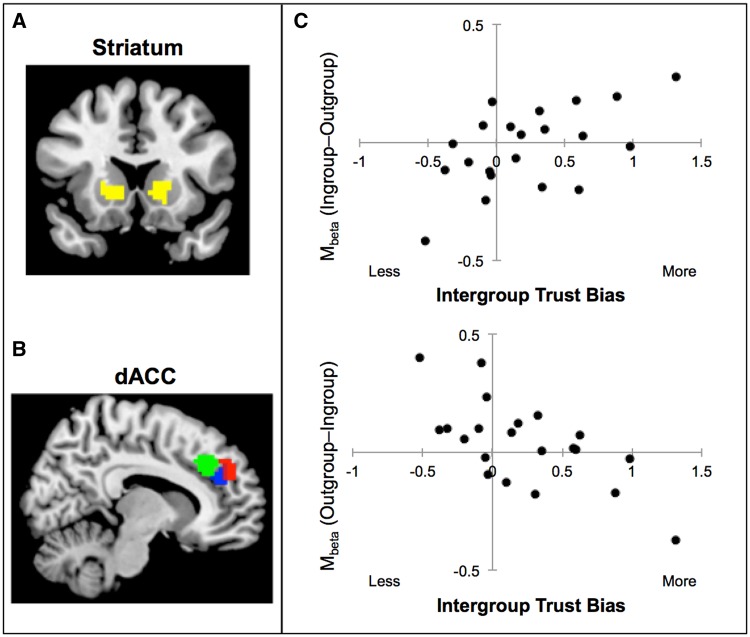Fig. 2.
Neural activation from within-subject parametric analyses, between-subject regression, and psychophysiological interaction (PPI) analyses. (A) Parametric analyses revealed that increases in ingroup (but not outgroup) trust were significantly modulated by increases in striatum activation (left: x, y, z = −18, 10, 8; t = 3.19, k = 288; right: x, y, z = 10, 20, 2; t = 3.17, k = 141). Bilateral striatum depicted in yellow was used as the seed VOI in subsequent PPI analyses. (B) Conversely, increases in outgroup (but not ingroup) trust were significantly modulated by increases in dACC activation (x, y, z = 14, 42, 26; t = 2.95, k = 67). Red cluster was modulated by parametric trial-by-trial outgroup trust; green cluster was significantly correlated with the reduction of trust bias across participants; blue cluster was functionally coupled with striatum during outgroup trust. (C) Whole-brain regression analyses revealed that activation in striatum—in clusters that parametrically tracked ingroup trust within participants—also significantly correlated with trust bias across participants (right striatum: x, y, z = 16, 14, −2; left striatum: x, y, z = 16, 14, −2; t = 3.37, k = 250). Second, dACC activation—in clusters that parametrically tracked outgroup trust within participants—significantly correlated with trust bias correction across participants (x, y, z = 12, 36, 36; t = 3.92, k = 40).

